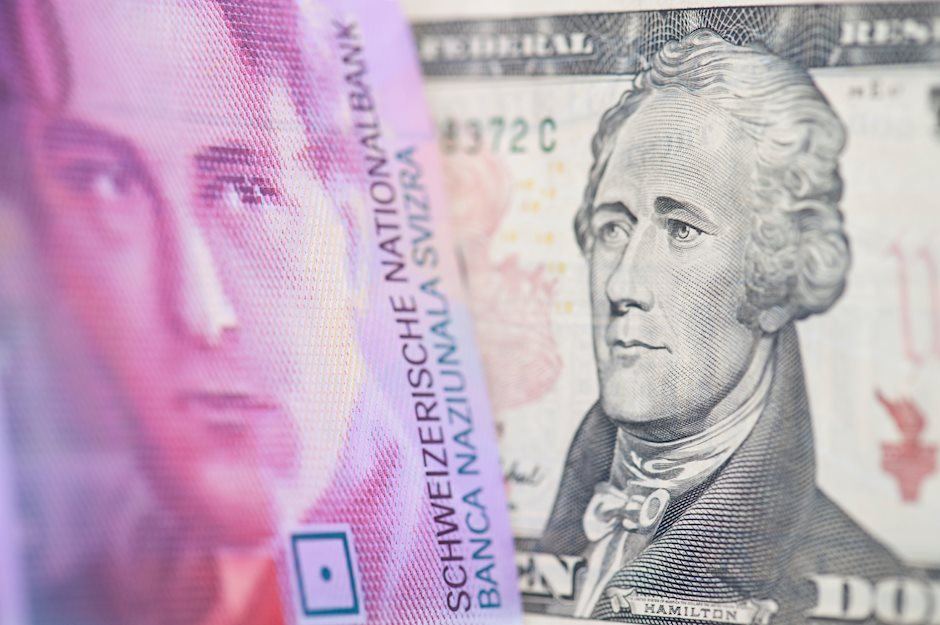USD/CHF softens to near 0.8650 ahead of US PCE inflation data
- USD/CHF trades in negative territory for the second consecutive day near 0.8655 in Thursday’s early European session.
- Global political uncertainty and geopolitical risks boost the Swiss Franc, a traditional safe-haven asset.
- Investors await the US PCE inflation data for more cues on the Fed's policy path.

The USD/CHF pair drifts lower to around 0.8655 during the early European session on Thursday. Persistent safe-haven flows amid the uncertainty surrounding the US presidential election on November 5 and Middle East tensions continue to support the Swiss Franc (CHF).
The US economic data continues to suggest that the US economy remains strong and supports prospects for less aggressive policy easing by the Federal Reserve (Fed). This, in turn, might cap the downside for the Greenback in the near term. Markets are pricing in about 96% odds of a 25 basis points (bps) rate cut by the Fed, according to CME's FedWatch Tool.
Traders will keep an eye on the US Personal Consumption Expenditure (PCE) Price Index, which is due later on Thursday. On Friday, the US employment data will take center stage, including the Nonfarm Payrolls (NFP), Unemployment Rate, and Average Hourly Earnings.
The race between Republican Donald Trump and Democrat Kamala Harris remains close ahead of the November 5 US presidential election. The ongoing geopolitical tensions in the Middle East and the uncertainty related to the outcome of the US election could lift the CHF and act as a headwind for USD/CHF for the time being.
Swiss Franc FAQs
The Swiss Franc (CHF) is Switzerland’s official currency. It is among the top ten most traded currencies globally, reaching volumes that well exceed the size of the Swiss economy. Its value is determined by the broad market sentiment, the country’s economic health or action taken by the Swiss National Bank (SNB), among other factors. Between 2011 and 2015, the Swiss Franc was pegged to the Euro (EUR). The peg was abruptly removed, resulting in a more than 20% increase in the Franc’s value, causing a turmoil in markets. Even though the peg isn’t in force anymore, CHF fortunes tend to be highly correlated with the Euro ones due to the high dependency of the Swiss economy on the neighboring Eurozone.
The Swiss Franc (CHF) is considered a safe-haven asset, or a currency that investors tend to buy in times of market stress. This is due to the perceived status of Switzerland in the world: a stable economy, a strong export sector, big central bank reserves or a longstanding political stance towards neutrality in global conflicts make the country’s currency a good choice for investors fleeing from risks. Turbulent times are likely to strengthen CHF value against other currencies that are seen as more risky to invest in.
The Swiss National Bank (SNB) meets four times a year – once every quarter, less than other major central banks – to decide on monetary policy. The bank aims for an annual inflation rate of less than 2%. When inflation is above target or forecasted to be above target in the foreseeable future, the bank will attempt to tame price growth by raising its policy rate. Higher interest rates are generally positive for the Swiss Franc (CHF) as they lead to higher yields, making the country a more attractive place for investors. On the contrary, lower interest rates tend to weaken CHF.
Macroeconomic data releases in Switzerland are key to assessing the state of the economy and can impact the Swiss Franc’s (CHF) valuation. The Swiss economy is broadly stable, but any sudden change in economic growth, inflation, current account or the central bank’s currency reserves have the potential to trigger moves in CHF. Generally, high economic growth, low unemployment and high confidence are good for CHF. Conversely, if economic data points to weakening momentum, CHF is likely to depreciate.
As a small and open economy, Switzerland is heavily dependent on the health of the neighboring Eurozone economies. The broader European Union is Switzerland’s main economic partner and a key political ally, so macroeconomic and monetary policy stability in the Eurozone is essential for Switzerland and, thus, for the Swiss Franc (CHF). With such dependency, some models suggest that the correlation between the fortunes of the Euro (EUR) and the CHF is more than 90%, or close to perfect.
Author

Lallalit Srijandorn
FXStreet
Lallalit Srijandorn is a Parisian at heart. She has lived in France since 2019 and now becomes a digital entrepreneur based in Paris and Bangkok.

















